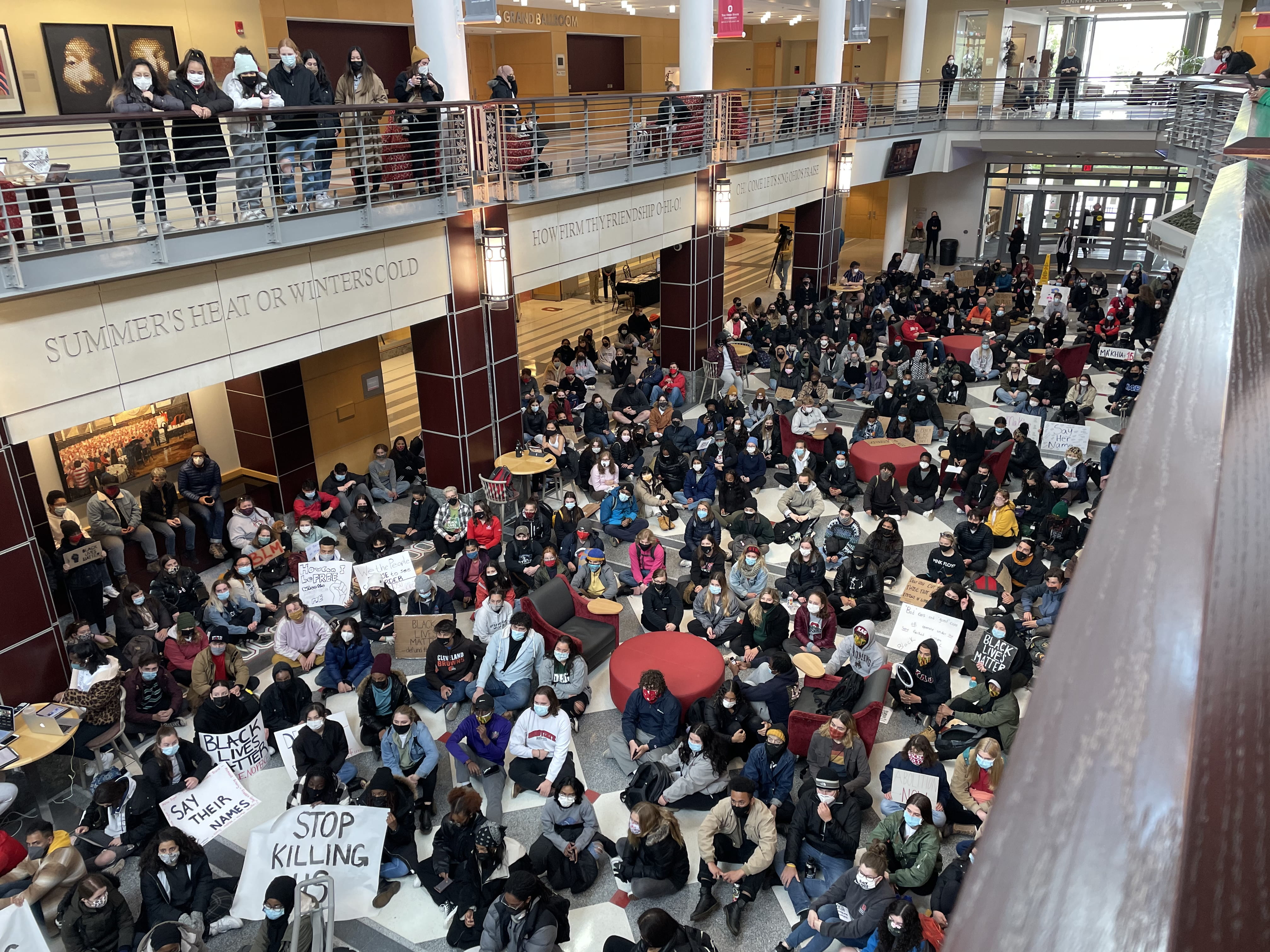
More than 400 people — largely Ohio State students — gathered outside the Ohio Union before staging a sit-in inside the building April 21 to protest Ohio State’s relationship with Columbus Police following the recent Columbus Police killing of Ma’Khia Bryant. Credit: Jessica Langer | Campus LTV Producer
Kendall Beard and other Moritz College of Law students organized a protest in May 2021 after the law school did not acknowledge the shooting of Ma’Khia Bryant like it had for George Floyd.
University spokesperson Chris Booker said in an email Ohio State combats racism through education, scholarship and numerous programs and initiatives, such as implementing non-police measures to improve safety after hearing concerns shared by students.
However, Beard said he feels face-to-face discussions between students and the university have been lacking. He said the Ohio State administration was most vocal during the peak of the protests, making their actions appear performative.
“This was happening in our community, and everyone was just like, ‘Oh, we’re sorry, but you have three exams next week,’ ” Beard, a second-year law student and member of the Black Law Student Association, said. “There wasn’t really an adequate time to mourn. There wasn’t an adequate time to really process what happened.”
Washington Cole, a second-year in operations management, said even if some Buckeyes advocate for change, Ohio State is still a predominantly white school, and most students cannot relate to the daily fears of Black students.
“Because I wake up every day, and I’m a Black woman, I think that when my brother wakes up every day, when my friends wake up every day, they are realizing that they wake up and are made aware of the social and societal hierarchy that exists in our nation,” Cole, special initiatives ambassador of the Black Student Association, said. “I do not think a lot of white students think about this every single day, because they don’t have to.”
Cole said the university should require diversity and inclusion training to help students better understand and empathize with what an average Black student might experience. She said Ohio State should amplify voices of color always, not just during Black History Month.
Organizations like BSA provide Black students a safe space from the systems of oppression that they face every day, Cole said.
Ramon Obey, a third-year in African American and African studies, said the efforts made by student activists educate others but have not otherwise made an effective change on campus due to lack of coalition amongst activist groups.
Booker said Ohio State is “committed to a safe and welcoming campus, a comprehensive and inclusive education and a truly anti-racist community.”
Booker said Ohio State combats racism and racial inequities through education, scholarship, research and numerous programs and initiatives — including the RAISE initiative and cohorts within the Office of Student Life’s Multicultural Center and the Office of Diversity and Inclusion.
Booker said the university has also implemented non-police measures to improve off-campus safety, such as permanent safety lighting, a full-time licensed independent social worker in the off-campus area and partnerships with community organizations.
“Ohio State has also been working to respond to the needs that BIPOC students have as it relates to mental health, conducting outreach to marginalized communities and embedding a counselor within ODI,” Booker said.
Beard said Ohio State has acted with “brochure diversity,” promoting the number of Black students on campus and the scholarships given to them. Instead, he would like for Ohio State to conduct “proactive diversity,” which looks into what dangerous stimuli or environmental factors make it dangerous for Black students to come to the university.
“It’s hard being the minority where it seems the only thing they care about is the fact that you’re there, and that’s all,” Beard said.


